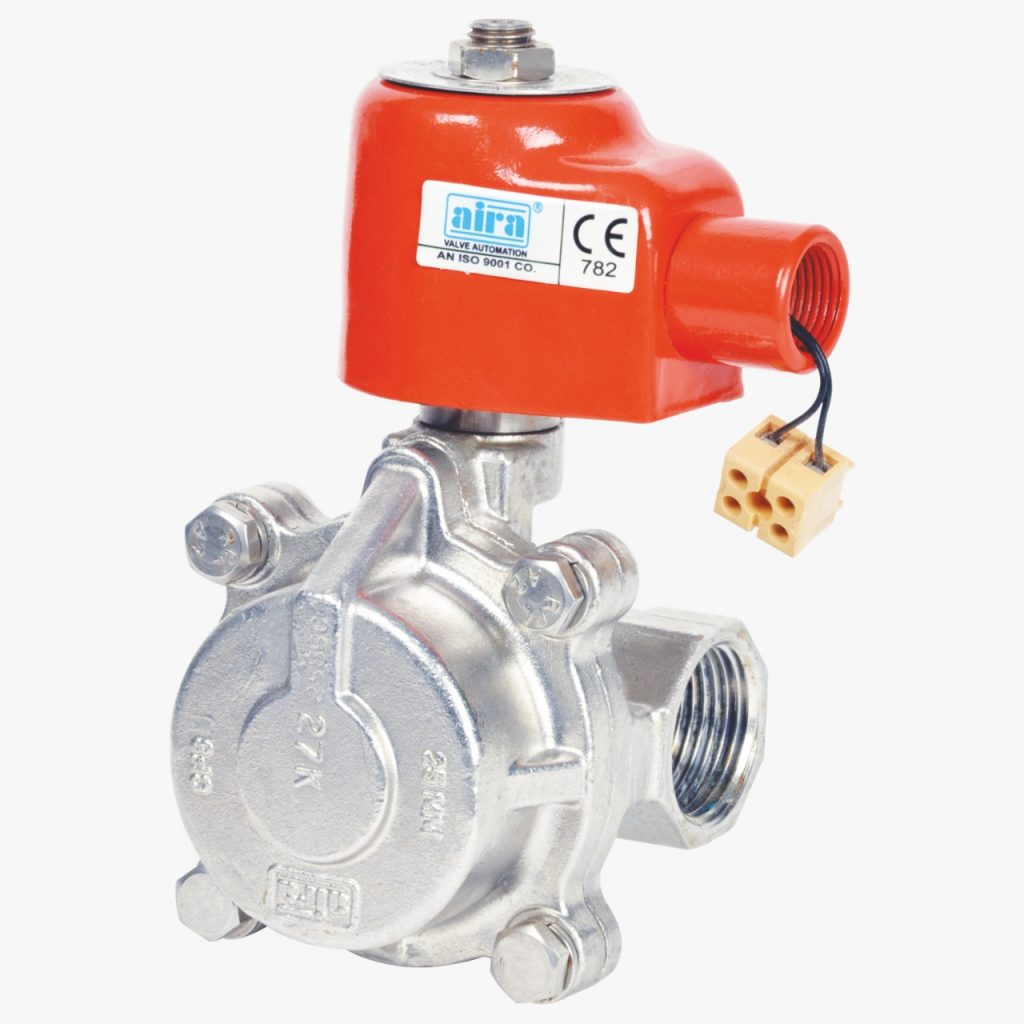Hello everyone, hope you are doing well. Today we brought to you the amazing mechanism of “Solenoid Valve”. In this article, we will unearth the working principle of the solenoid valve, its advantages, disadvantages, and applications. Read the full article to empower your knowledge and share it with your friends.
Introduction
The solenoid valve is a simple on-off control valve. It runs on electricity, to activate the valve it required a power supply. Generally, it comes in two variations: normally open and normally closed. When constant flow is required in the operation, then you have to install a normally open solenoid valve. The normally open solenoid valve is energized to close the valve and stop the fluid flow. The normally closed solenoid valve is energized to open the valve and allow fluid flow.
Basic Mechanism of Solenoid Valve
As we have seen the solenoid valve is an electronically controlled valve. There is an electric coil inside the solenoid, which has a movable ferromagnetic core (plunger) at its center. A small orifice is closed off when the plunger is in the rest position. Bypassing an electric current through a coil, a magnetic field is created. The magnetic field pushes the plunger upward, thereby opening the orifice. It is based on this principle that solenoid valves open and close.
Advantages of Solenoid Valve
There are many advantages to solenoid valves. Over time, solenoid valves have been designed and improved, making them safer and more efficient. This valve can be installed at a variety of sites and can be adapted to suit a variety of applications.
Additionally, the valve can be opened and closed within less than a second, which creates a great advantage. With an automated control system, which is crucial for toxic gases and fluids that require high maintenance. A wide range of processes and applications are able to utilize the solenoid valve.
- Rapid response time
- Low energy consumption
- Can be operated remotely
- Adaptable to a variety of machinery and applications
- Affordable replacement parts
- Available in both DC and AC voltages
- Used for low and high temperatures
- External leakage protection
- Vertical or horizontal installation
Disadvantages of Solenoid Valve
Solenoid valves, as well as any pneumatic or valve application, have some disadvantages. When the voltage feed being passed through is too low or too high, solenoid valves can often undergo problems due to human error. Magnetic fields are either strengthened or weakened by this action. To open and shut the valve, it’s vital to set the voltage correctly, because if it’s not set correctly it can cause the valve to wear more quickly and result in the coil breaking.
- Voltage-sensitive
- In the case of an incorrectly set magnetic field, the valve can partly close
- Over the life of the valve, the coil may need to be replaced
- During operation, the control signal must remain on
- Fluid flow can affect valve fluid (pre-valve flow is always greater than valve backflow).
Solenoid Valve Applications
Electrically operated solenoid valves control liquids, gases, or steam. From controlling compressed air to operate pneumatic equipment to controlling high-pressure oil to operate hydraulic equipment, solenoid valves have a variety of uses.
Generally, a solenoid valve that controls the actual media is a process valve.
There are a variety of applications for solenoid valves to control a variety of media. Choosing the right solenoid valve is crucial.
There is a wide range of ambient temperatures, from sub-zero temperatures, such as in a refrigeration unit, to desert-like temperatures outside. They can be used in combustible environments like flour mills or those with highly explosive pressures, temperature ranges, frequency of operations, and even in environments with highly explosive pressures. In order to choose the right valve for an application, great knowledge and experience are needed.
It would be necessary to collect all the technical data before selecting the right solenoid valve, including the medium, the pressure, the differential pressure, the temperature, the voltage, the environment, and the frequency of operation.
